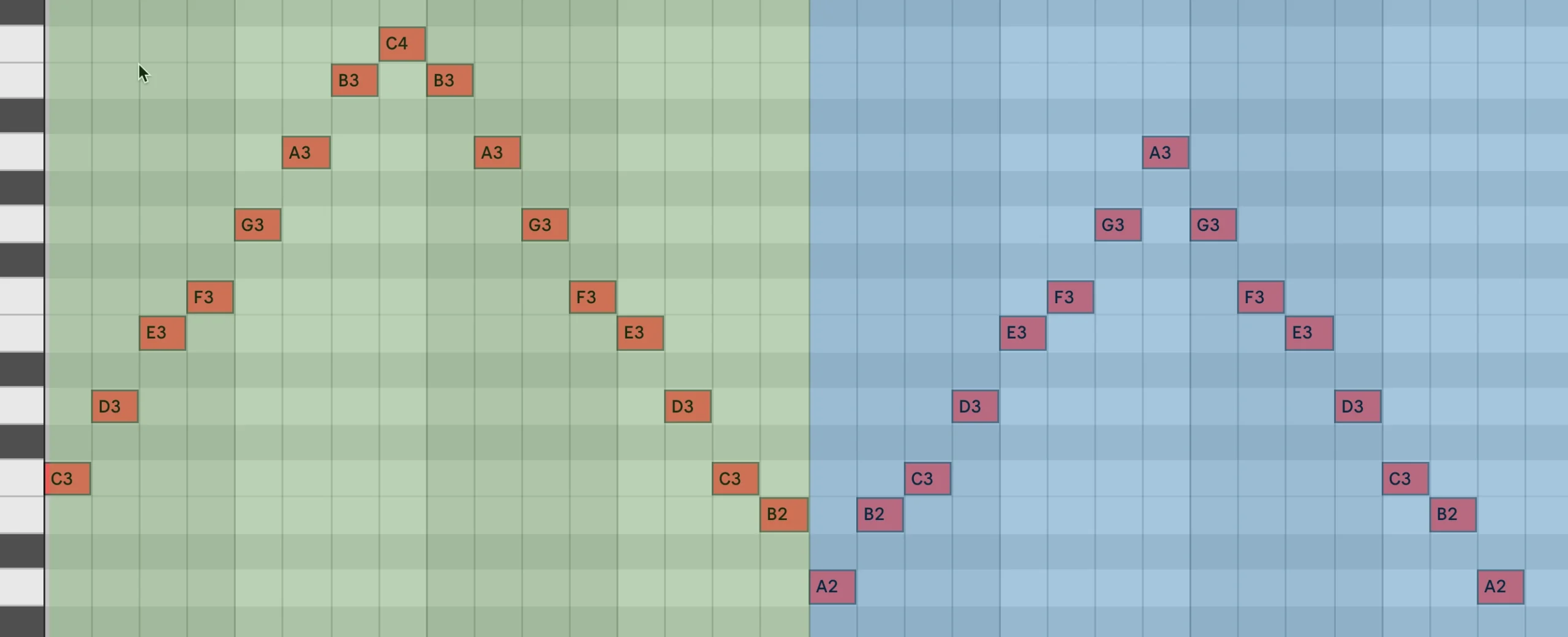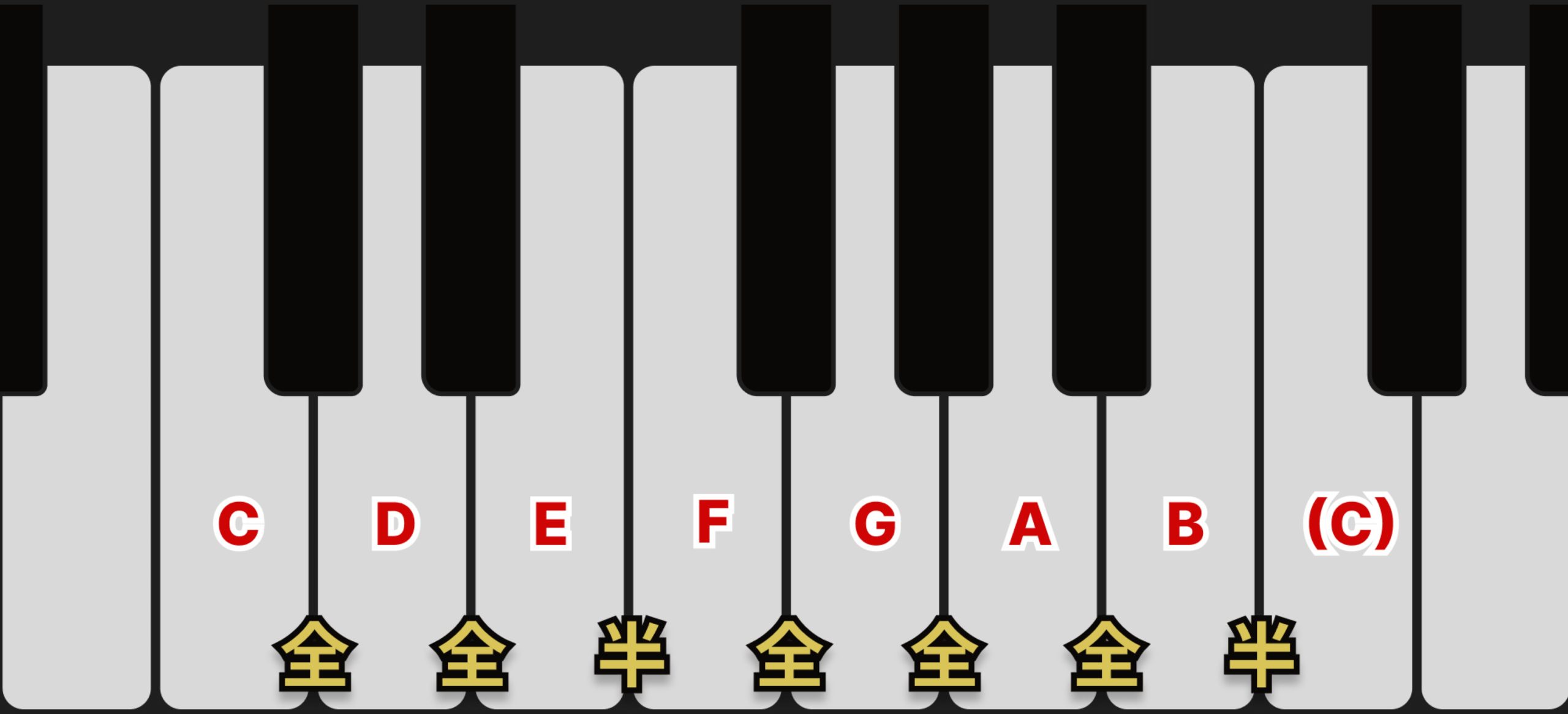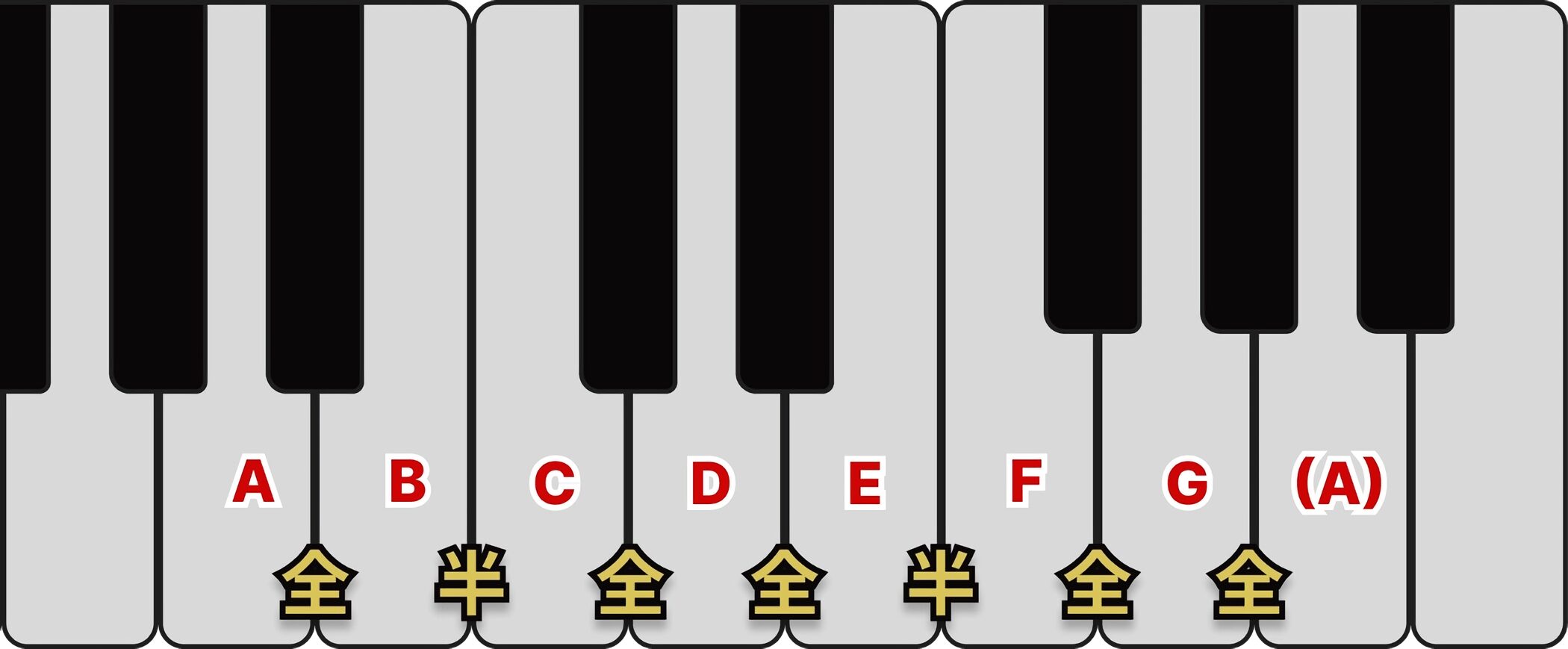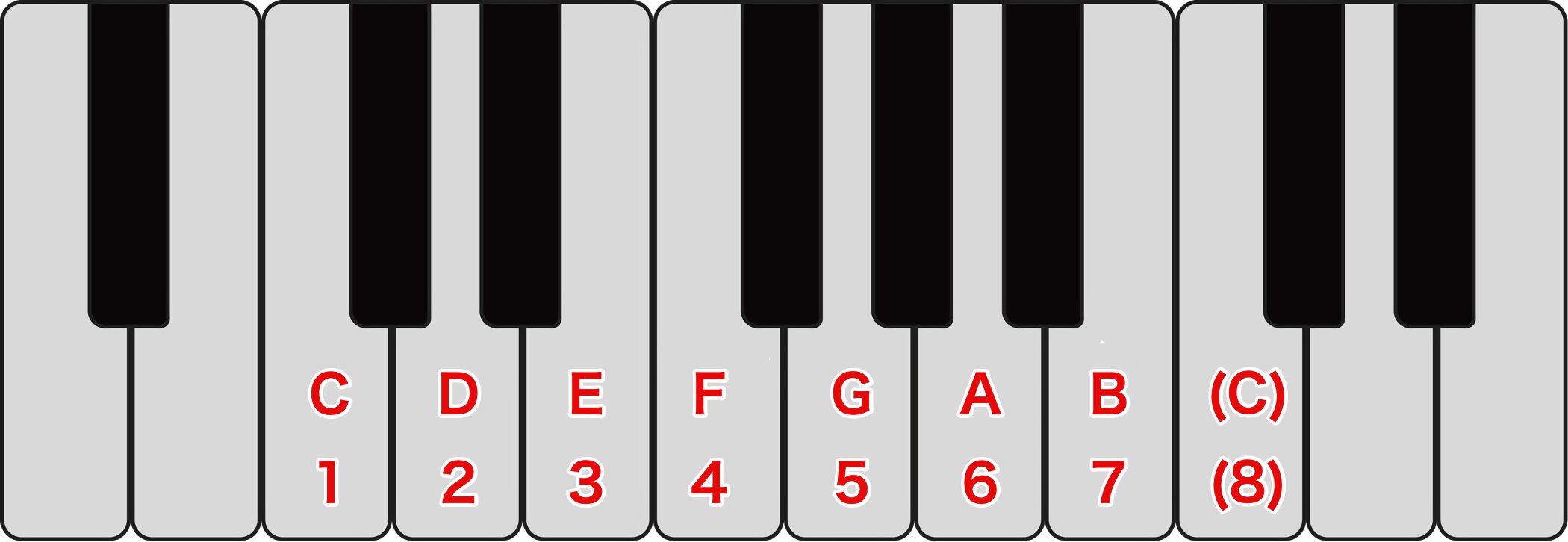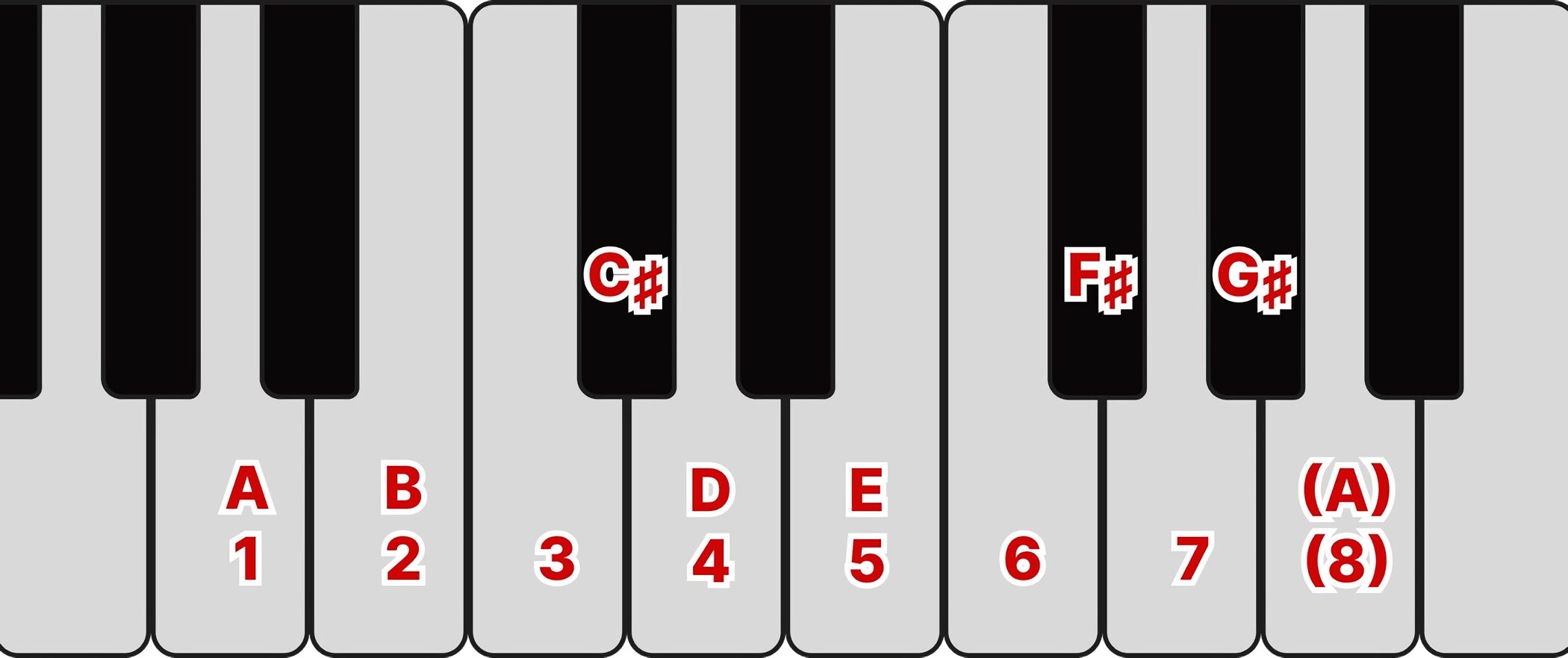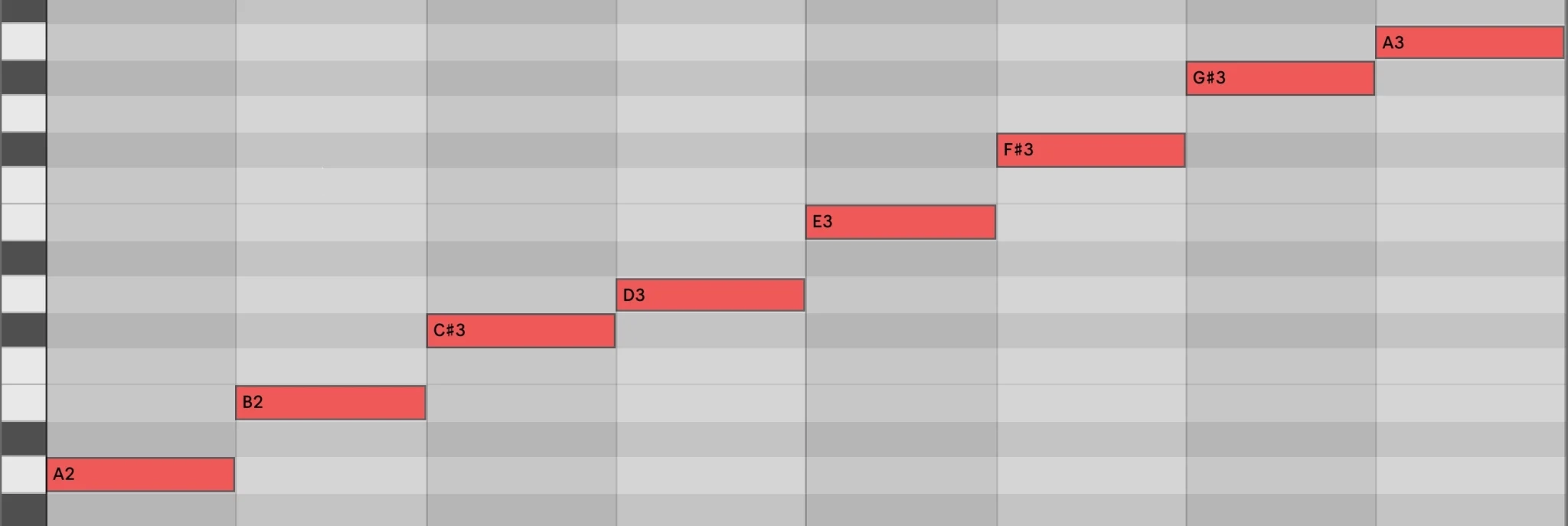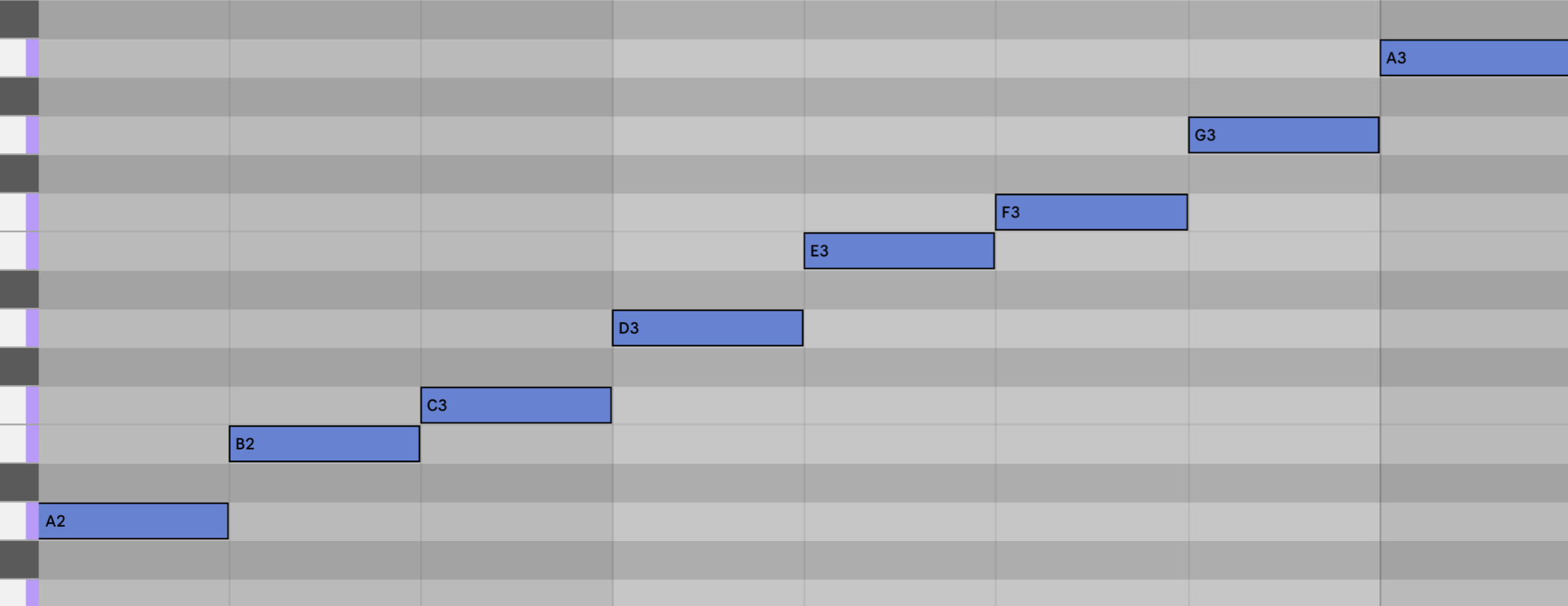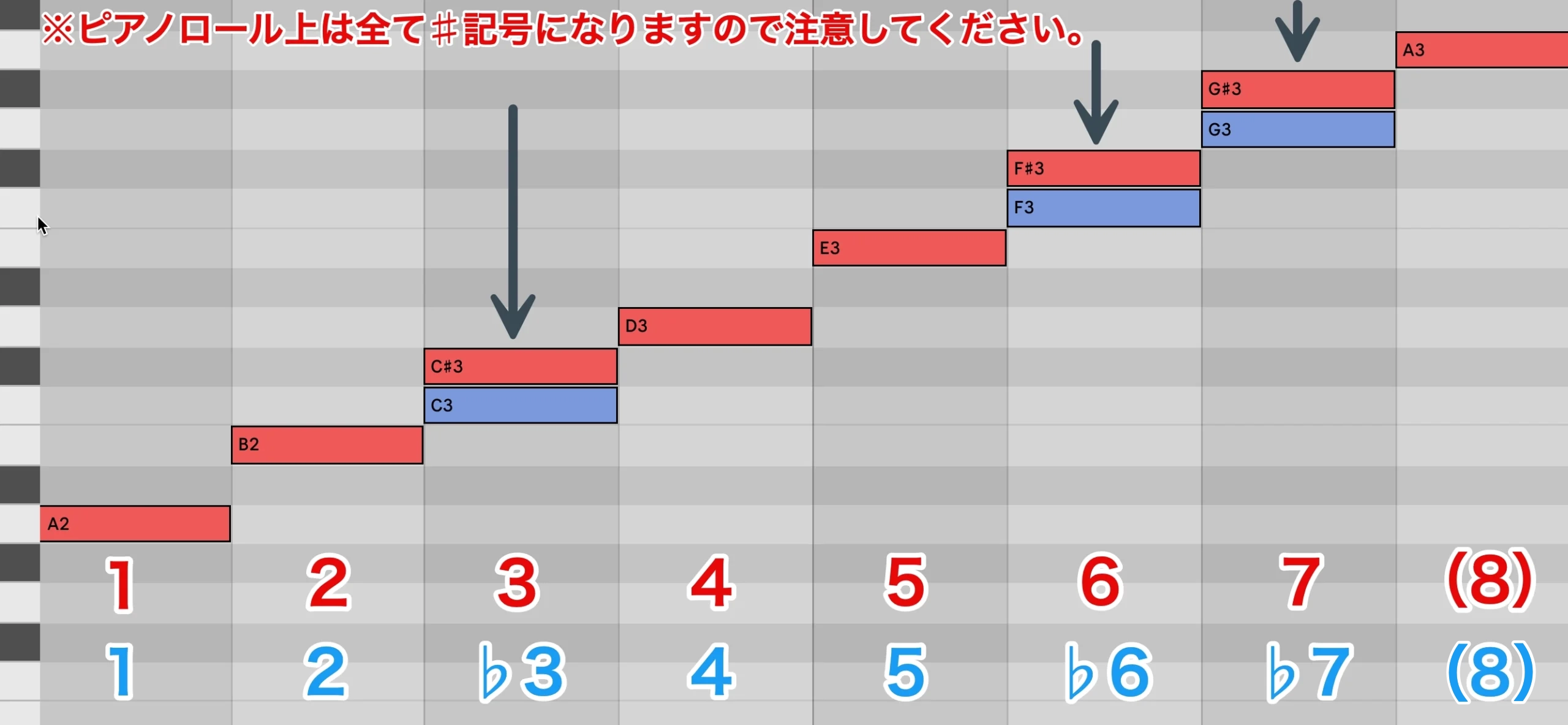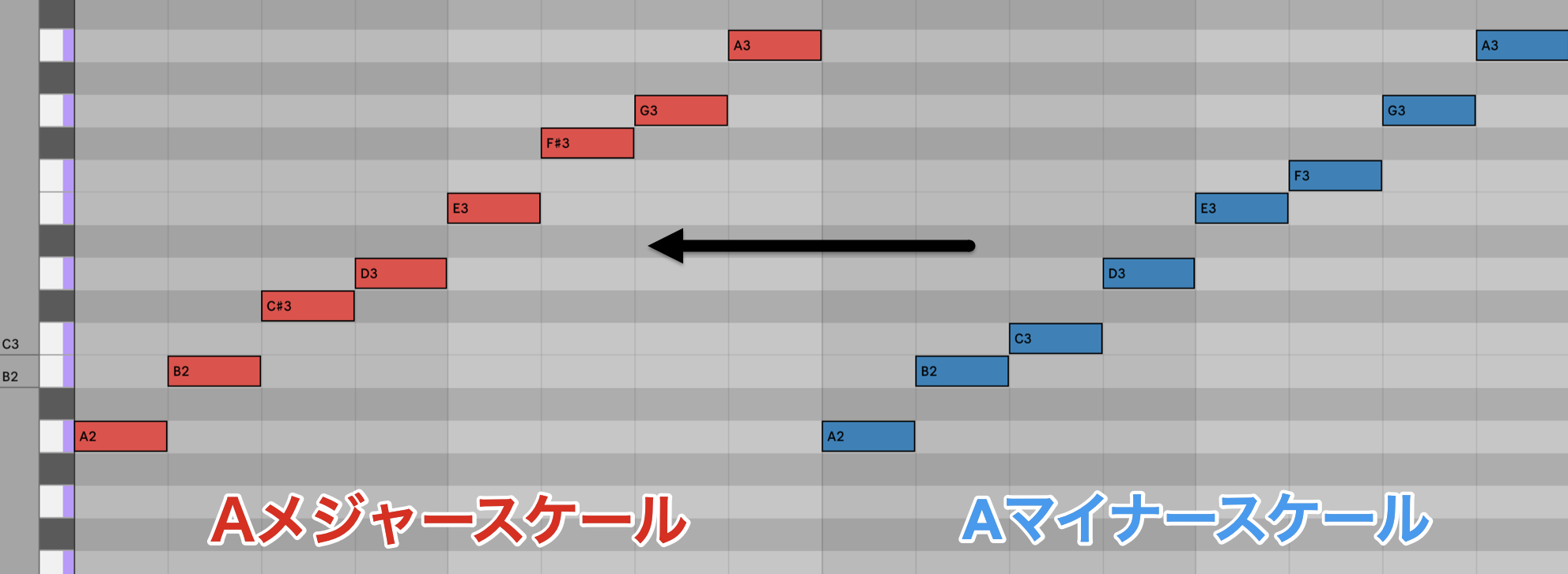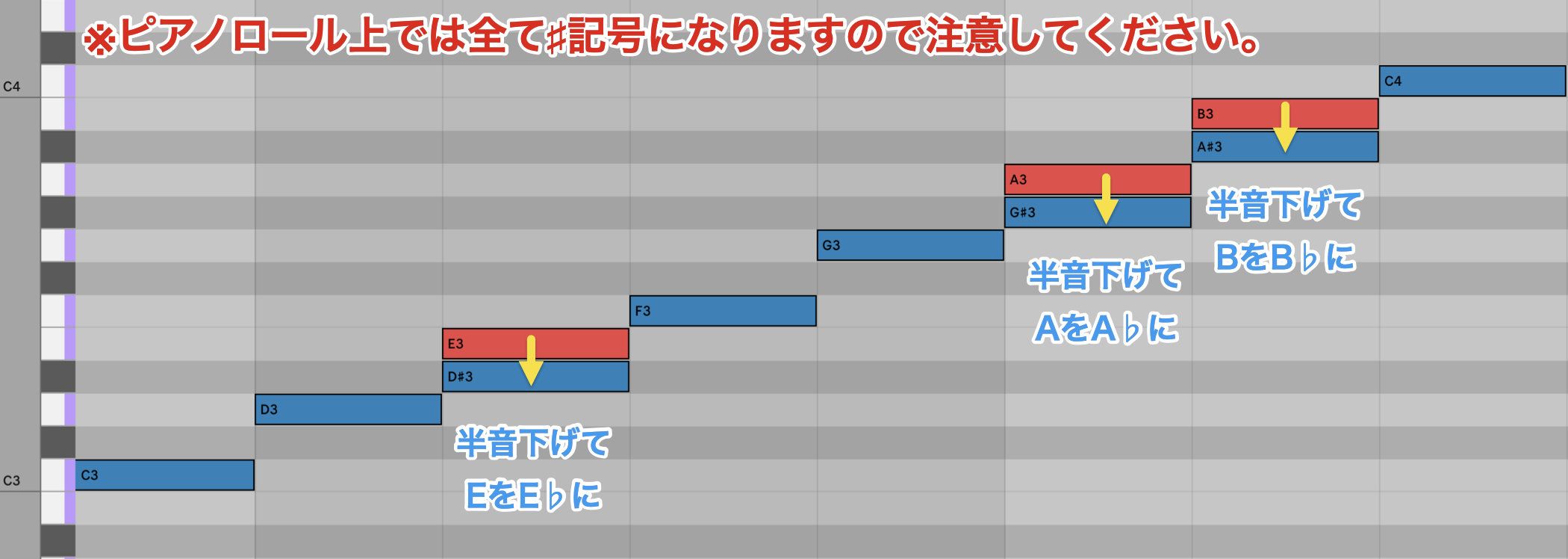マイナースケールとスケールディグリー/音楽理論講座
マイナースケールの構成音について把握する

コードのお話へ入って行く前に、マイナースケールとスケールディグリーを確認していきましょう。
第2回目で、少しだけ登場したこのマイナースケール。
悲しい雰囲気の曲や、クールな曲には欠かすことができないサウンドです。
ここでは、マイナースケールとスケールディグリーを併せて解説していきます。
まずは、こちらをお聴きください。Cメジャースケールから始まりますが、、
譜面にも、ピアノロール上にもCメジャースケールの音しかありませんよね。
ですが、青の部分から何か物悲しく聞こえませんでしたか?
青の部分(Cメジャースケールの音だけでAから始まる部分)のみ聞いてみましょう。
実は、これが「マイナースケール」です。
今は、Aから始まっていますので、Aを主音(メインの音)とした 暗い音階ですね。
正式名称は、ナチュラルマイナースケール(自然的短音階)です。
メジャースケール同様、人間の感覚から”自然的”に生まれたスケールです。
実は、マイナースケールはいろいろな問題から、あと二種類あるのですが一般的に”マイナースケール”と呼ばれるものは、このナチュラルマイナースケールになります。
ピアノ上でマイナースケールを確認してみましょう。
メジャースケール
マイナースケール
メジャースケールが、全音 全音 半音 全音 全音 全音 半音 に対し、
マイナースケールは、全音 半音 全音 全音 半音 全音 全音 ですね。
しかし、少し覚えにくいです。
ここで、スケールディグリーの登場です。
スケールディグリーとは、メジャースケールを基本にして主音(メインの音)から順番に1から7までの番号(8はオクターブ上の主音)をふり、スケールやコードの構成音をわかりやすく把握できるスグレモノなのです。
実際に鍵盤上で確認していきます。
Cメジャースケールに対し、スケールディグリーを振ってみましょう。
このように、メジャースケールの第一音目を1とし、数字を振っていきます。
同じ要領でAメジャースケールでも確認してみましょう。
メジャースケールのスケールディグリー、ご理解いただけましたでしょうか。
では、ここで「Aマイナースケール」と「Aメジャースケール」を、比べてみましょう。
そうすることで、メジャースケールとマイナースケールの”どこがどう違うのか”が明白になります。
Aメジャースケール
Aマイナースケール
ここで2つを重ねてみましょう。
3番目、6番目、7番目の音に違いがあるということがわかります。
マイナースケールのスケールディグリーは「1 2 b3 4 5 b6 b7 8」となります。
メジャースケールの3、6、7番目の音を半音下げると覚えてしまえば先ほどの間隔より、シンプルになりますね。
メジャースケールの3、6、7番目の音を半音下げればマイナースケールになります。
よってCマイナースケールは、
となりますね。
聴き比べてみましょう。
- Cを主音(メインの音)とした明るい音階、Cメジャースケール
- Cを主音(メインの音)とした暗い音階、Cマイナースケール
このような考えで進めていくと、メジャー/マイナーの構造が簡単に把握できます。
次回は、ここまで応用した「レラティブと、パラレル」について解説を進めていきます。





